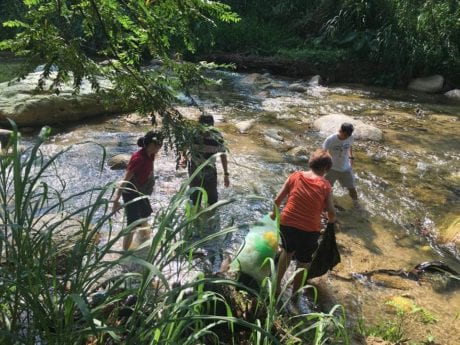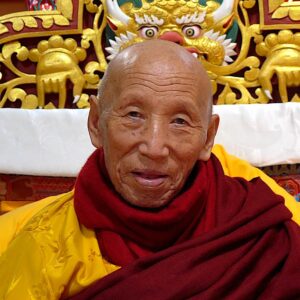Life-release or Saving Lives
Life-release, or the saving of animals destined for slaughter, is practiced throughout the Buddhist world. All schools of Buddhism encourage followers to not only refrain from harming beings, but also to actively save lives. Tibetan Buddhists practice Tse-thar, which translates as “life liberation.” Here is a link to a short video on the subject. Also, here is a link to a fish release conducted by the lamas of Ka-Nying Shedrub Ling monastery in March of 2017.
When we perform this ritual, it is best to be conscious of local conditions. We should release animals native to an area that do not cause any environmental imbalance.
In this excerpt from Khenpo Gyaltsen’s A Lamp Illuminating the Path to Liberation: An Explanation of Essential Topics for Dharma Students, Khenpo gives a commentary on the practice:
Origins of Life-release According to Tradition
It is said that in the past, in India, there lived a non-buddhist king named Trichen, who enjoyed eating meat so fresh that the blood was still warm, and who killed ten thousand animals. Through the karmic ripening of these actions, he was reborn in Vajra Hell, one of the eighteen hell realms, where the extent of his suffering was such that he died a hundred times and each time fell back into hell as he was revived. The venerable Ānanda saw the suffering of this impure being and asked the Bhagavan about it. The Bhagavan replied, “This is the karmic ripening of a man who enjoyed eating meat so fresh that the blood was still warm, and who enjoyed killing animals.”
Then Ānanda asked the Dharma King, Buddha Śākyamuni, “Is there any way to liberate him?” and the Lord of Death, King of Dharma (Buddha), answered, “If you want to liberate this man from hell, save the lives of animals in the worldly realms and he will be freed.” So Ananda saved lives for the man’s benefit, and he was liberated from Vajra Hell.
The Animals That Are to be Saved
Generally, there is no difference in the size or species of the animal to be saved. However, buying and liberating animals that were certainly destined to be killed by butchers in a slaughterhouse naturally brings the greatest benefit.

The Manner of Releasing Lives
Saving old and emaciated livestock, or animals that are of no use to us, is less beneficial than saving predominantly healthy and valuable livestock. At the time of saving a life, lamas, monks and so forth will cleanse the animals by wafting the smoke of burning incense over them and burning juniper, throw charmed mustard seeds and so on in order to expel obstructing spirits, and perform ablution rituals.
They will then recite the ritual chants for saving lives, such as the Amitayus sūtra and the Amitayus dhāraṇī, and aspire that the animals may enjoy long lives and remain for a hundred years starting from that very day. Next, they will then remove the halters from their heads, the saddles from their backs and so on, and vow never again to make use of these animals. Then, they will release them and send them off.

The Right Time to Save Lives
The main days for releasing animals are the 8th, 10th, 15th, 25th, and 30th days of the lunar month. This is because if one frees animals on these days, the resulting virtue is a hundred thousand times greater than on other days. For specific purposes, you can also save lives on indefinite astrological days (i.e. days of no specific astrological significance), on Buddhist festivals and so forth.
Benefits of Releasing Lives
The benefits obtained by releasing the lives of animals are similar to the benefits obtained by holding full monastic vows. By freeing a single sheep, a single rebirth in the lower realms is purified. By freeing a single goat, seven such rebirths in the lower realms are purified. Even if one has committed the harmful action of killing one hundred men and one hundred horses in this world, the act of saving a single life can purify those harmful actions and obscurations.
By saving thirteen lives, one purifies the harmful actions and obscurations of ten thousand eons. If one releases life on behalf of a being whose life is coming to an end, their life will be prolonged. If one liberates thirteen lives on behalf of someone who only has three days to live, that person’s life will definitely be extended by three years. At the same time, in the sūtras of the Blessed One, it is said that killing a single liberated animal (i.e. an animal that has been released in this way) is equal to killing one hundred humans, and that such an action brings countless other negative consequences.
Excerpt on life-release from:
A Lamp Illuminating the Path to Liberation: An Explanation of Essential Topics for Dharma Students by Khenpo Gyaltsen (translated by Lhasey Lotsawa Translations, Nepal: 2014, pp. 152-55.










Responses